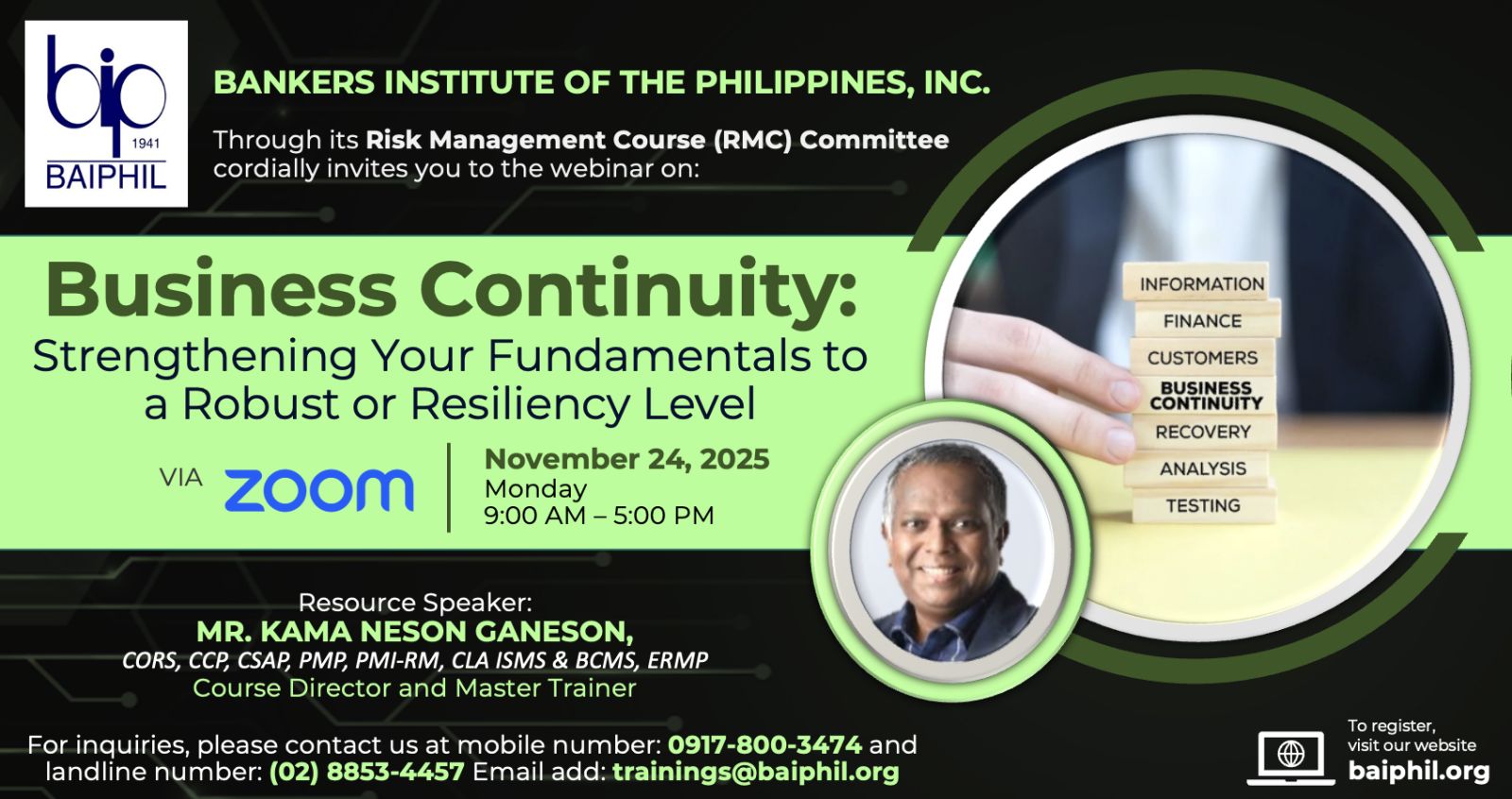Description
Program Description:
Resiliency in business continuity has become mission‑critical for the financial industry because the 21st century has brought a risk landscape that is faster‑moving, more interconnected, and more unforgiving than ever before.
In finance, even a short disruption can cascade into systemic instability, regulatory breaches, and loss of public trust.
Here’s why it matters so much now:
- The Risk Landscape Has Transformed
-
- Cybersecurity threats are now constant, sophisticated, and often state‑sponsored. A single breach can halt operations, compromise sensitive data, and trigger regulatory penalties.
- Climate change and extreme weather events are disrupting infrastructure, supply chains, and branch operations.
- Geopolitical events such as sanctions, conflicts, and trade restrictions can have immediate impacts on payment systems, cross-border transactions, and liquidity.
- Pandemics and health crises have proven that global events can shut down physical operations overnight.
- Interconnected Systems Mean Interconnected Failures
-
- Modern financial institutions rely on complex digital ecosystems – cloud providers, fintech partners, payment processors, and global markets.
- A failure in one node (e.g., a third‑party service outage) can ripple across the entire network, affecting millions of customers.
- Regulators now expect firms to map and manage these dependencies as part of operational resilience frameworks.
- Regulatory and Stakeholder Expectations
-
- Global standards like the Basel Committee’s Principles on Operational Resilience and jurisdiction‑specific rules (e.g., UK’s PRA/FCA, MAS in Singapore) require institutions to prove they can identify, adapt, recover, and learn from disruptions.
- Customers expect always‑on service – downtime erodes trust and can trigger mass account migration.
- Investors and boards increasingly view resilience as a strategic differentiator, not just a compliance checkbox.
- Preparing for “Next‑Gen” Risks
-
- In the coming decades, financial institutions must anticipate:
- AI‑driven fraud and market manipulation
- Quantum computing threats to encryption
- Decentralized finance (DeFi) disruptions to traditional banking
- Global systemic shocks from climate, cyber, or geopolitical events
Resilience isn’t just about surviving these—it’s about thriving despite them by embedding adaptability into strategy, technology, and culture.
Learning Objectives:
At the end of the training, participants are expected to:
- Understand the key concepts of business continuity and resiliency and equip the skills needed to design a robust BCP, an infused crisis management culture and actionable plans from a strategic, tactical and operational levels.
- Understand how to enhance ISO 22301 BC Management and 22316 BC Resiliency requirements.
- Understand how to protect business ahead of disruption or unforeseen events; thru the implementation and management of the organizations business impact, hazard and vulnerability analysis, moving from traditional risks assessments.
- Learn how to recover business critical functions in crisis situations (cybersecurity attacks, 3rd party intrusions thru the basic concepts and principles of BCM and the BCM process and framework.
Program Structure and Outline:
The Program is delivered using a combination of instructor-led lectures, case study and exercises on practical implementation of the concepts discussed within the training. The topics presented below define the areas of focus under the program.
Global Trends
- What and Why is Business Continuity Critical today?
- Knowing the Basic definitions
- The BASEL Principles for Business Continuity
- Understanding Risk & Threats
- Mapping Global Issues and Crisis to Portfolio
Effective Business Continuity Management as per ISO 22301
- Risk Management and Business Impact Analysis
- Key Differences Between BCP and DRP
- Aligning the Impact Analysis to the Portfolio of the Organization
- Techniques on Vulnerability & Hazard Analysis
- Recovery Strategies aligned to the Portfolio
- Crisis and BCP Team Structure Roles and Responsibilities
- Incident and Crisis Management (Pre-Crisis, Crisis Response, Recovery & Resumption, Post Crisis – Lessons, Investigations & Analysis, Continuous Improvement
- Crisis Communication
- Business Continuity Plans
- Back-Up and Alternative Plans
- Testing and Audit Program
- Training and Awareness Programs
- The BCP Framework (MAO, RPO, RTO and the MBCO)
Resource Speaker:
MR. KAMA NESON GANESON
CORS, CCP, CSAP, PMP, PMI-RM, CLA ISMS & BCMS, ERMP
Course Director and Master Trainer
Schedule:
November 24, 2025 (Monday) 9:00 AM – 5:00 PM
Training Fee per Participant:
Member Institution – Php3,920.00
Non-Member Institution – Php5,040.00
*VAT inclusive

